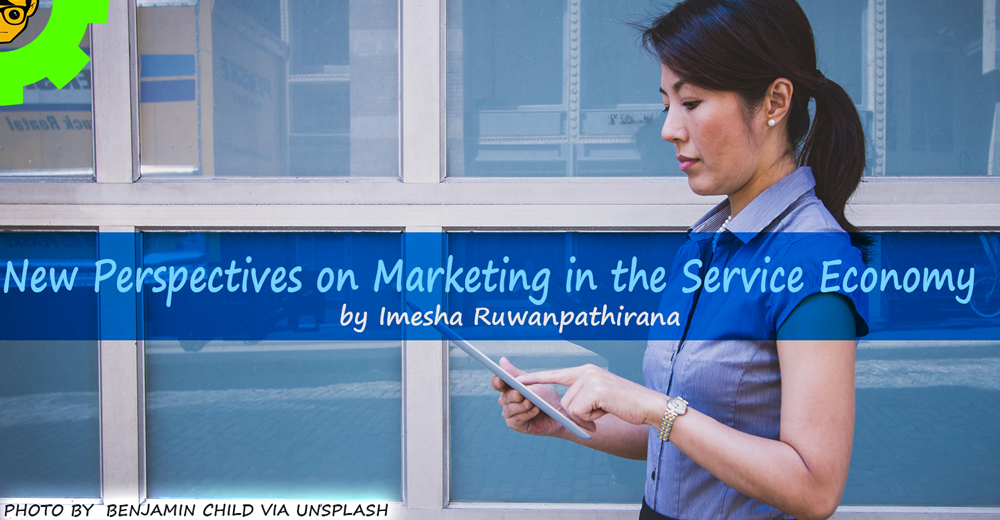
In ancient times people defined marketing as “selling goods”. But selling concept is just a little part of marketing concept. When it comes to marketing, you may think that what are the things that we can market? Laymen people may say that “It’s all about the product”.
But it is not about tangible products. With the development of economies and the business concepts,people are finding more ways and means to fulfill their needs. Basic needs are changing in the long run. In modern business context, product refers to tangible goods, services, events, experience, property,persons, places, organization, information and ideas. Now the whole world is digitalized. We live in a digital world. Most economies are data driven economies. If you want to be powerful, wealth is not enough. Data and the information drive the whole economy. What about services? Services dominate the economy in most nations. The highest contribution to GDP (Gross Domestic Product) is from service sector in most of the developed countries. The contribution to service sector is booming day by day. The following diagram shows the contribution to GDP by the service sector in USA economy.
The importance of service Sector in economy is growing rapidly.
- Services account for more than 60 percent of GDP worldwide
- Almost all economies have a substantial service sector
- Most of the new employment is provided by services (Fastest growth expected in knowledge-based industries)
- Strongest growth area for marketing
?
Services are the economic activities offered by one party to another. Services are intangible, perishable, variable, inseparable and involvement of the customer is a must to take the service. Marketing management tasks in the service sector differ from those in the manufacturing sector.
The eight common differences are
1. Most service products cannot be inventorie
- Services cannot be inventoried. Service provider may have the capacity to serve 10 persons per day. But that depends with the customer’s situation. Because from person to person, service time may be varied. The best example for this is getting consulting service or getting medical advices from a doctor. To overcome this problem, in marketing, pricing, promotions and reservations are carried out to smooth demand.
2. Intangible elements usually dominate value creation
- It is harder to evaluate a service. Normally tangible goods have a standard. So easily we can understand how well that we are than our competitors. But in service, it totally depends with the person who provides the service. In marketing we can emphasize the physical clues, employ metaphors and vivid images in advertising.
3. Services are often difficult to visualize and understand
- Since the services are difficult to visualize we should educate the customers on making good choices and give them guarantees.
4. Customers may be involved in co-production
- This is the interaction between the customer and the provider. Poor task execution will affect the customer satisfaction. Therefore, we need to develop user friendly equipment, facilities and systems. We should train customers to provide good support.
5. People may be part of the service experience
- The best example for this is the service you get from a beauty salon. If you need a haircut you need to communicate with the service provider what is the exact way that you want to cut your hair. You need to support the service provider by moving your head and staying in the right position.
6. Operational inputs and outputs tend to vary more widely
- Hard to maintain quality, consistency and reliability.
7. The time factor often assumes great importance
- Customers want services at convenient times. Therefore, we need to offer extended hours and speed the delivery time.
8. Distribution may take place through nonphysical channels
- Mostly it is done through electronic channels or telecommunications. So, we need to provide user friendly websites and free access by telephones.
Value added physical tangible elements help us to distinguish goods and services. You will get a clear idea about that from the following diagram.
|
Everybody knows 4ps in marketing. But in service marketing, we need another 4Ps to overcome those problems in services. That is
|
- Price and Other User Outlays – People are always ready to pay more money if we can deliver a good service. We need to satisfy the customer’s expectations. Beyond the customer expectations, price is just a matter between cost and the value they perceive.
- Promotion and Education – We should keep informing, educating, persuading, reminding customers about our service.
Carlton Ritz Hotel – “Let us arrange for a tailor at 5.00 a.m.”
“Let us move the heaven and earth. Then move it back”
“Let us invent a cocktail and name it in your honor”
“Let us move the heaven and earth. Then move it back”
“Let us invent a cocktail and name it in your honor”
- Process – We should clearly design the process. If not, it will waste time, create lack of experience and disappointing customers. We can design activity flows, role of contact personnel, number and sequence of actions for customers.
- Physical Environment – Design services are capable and provide tangible evidence of service performances. Also they create and maintain physical appearances through interior design landscape, staff grooming, sounds and smell etc.
- People – Interaction between customer and the contact personnel strongly influence the customer perception of service quality. They are the ones who are engaging with the customers. They should be educated with how to treat customers, how to welcome, how to use the language etc. For example- the Carlton Ritz Hotel says “We are gentlemen and ladies who serve to gentlemen and ladies”. It shows that, how strong is their human capital to serve the customers.
- Productivity and Quality – Productivity and quality must work hand in hand. Improving productivity is the key to reducing costs.
Service marketers play a huge role in modern business context. So, we need to identify the advantages of focusing service marketing in modern business context.













